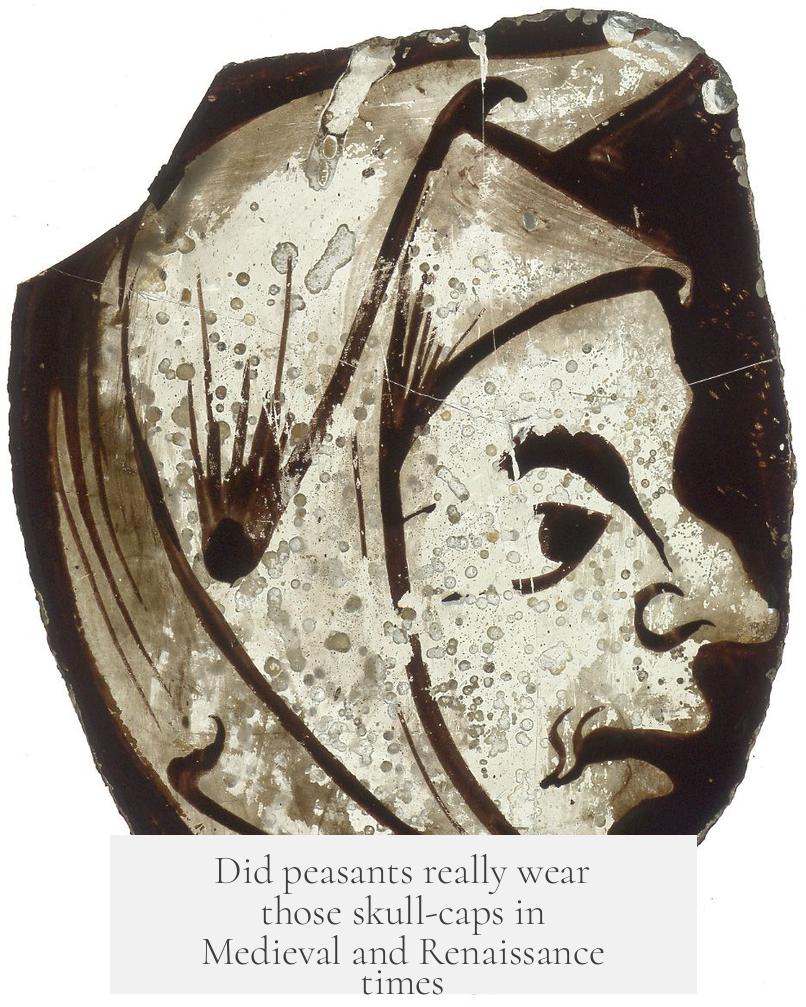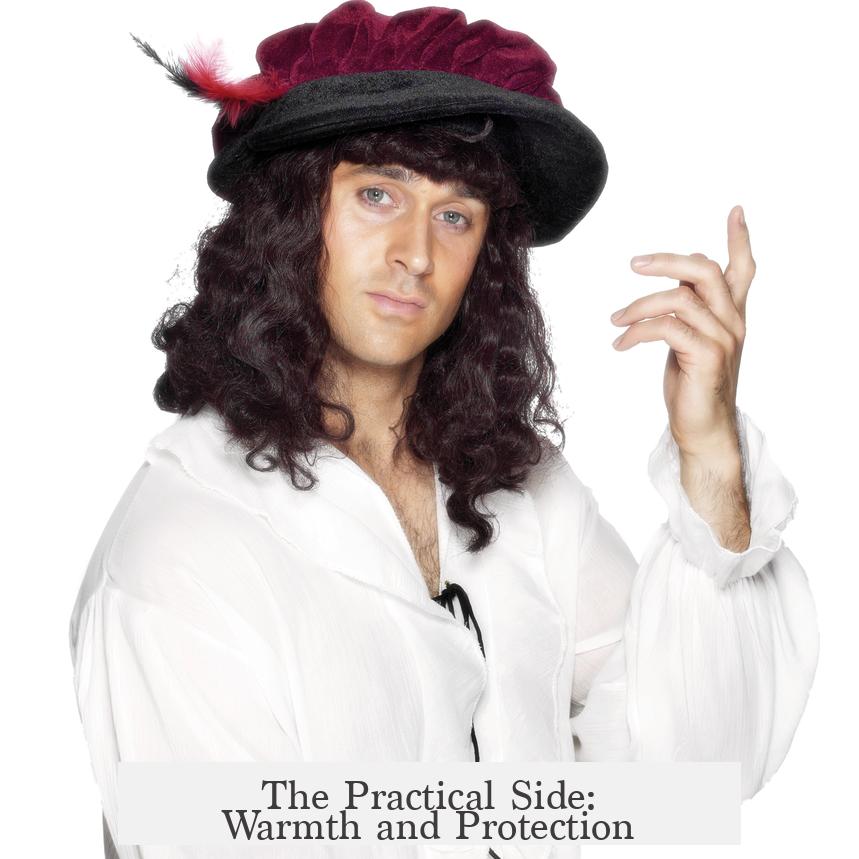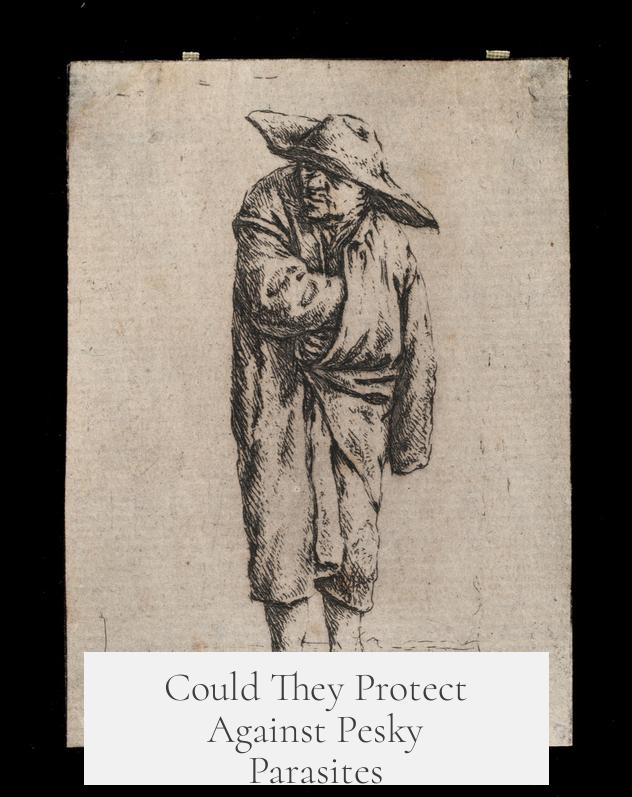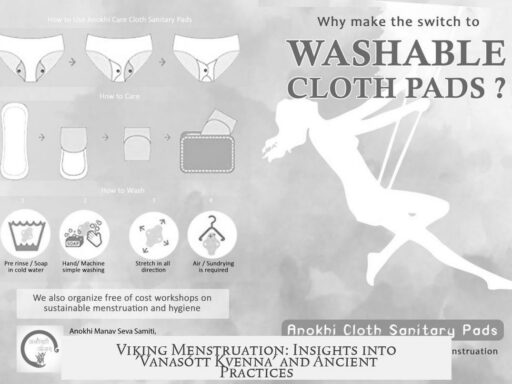Peasants did wear skull-caps called “coifs” during the Medieval and Renaissance periods. These brimless caps appear frequently in period artwork and historical records, confirming their use among the lower classes, especially in northern Europe. Notably, Pieter Bruegel the Elder’s 1586 painting “The Blind Leading the Blind” shows peasants wearing such caps, sometimes layered beneath broader hats.
Coifs served practical purposes. They were typically made of felt or similar materials that covered the ears and extended over the back of the neck. This design protected wearers from cold temperatures, which were notably harsh during the Little Ice Age. The insulation helped retain body heat, particularly crucial for those working outdoors for many hours.
Besides warmth, the skull-cap may have provided protection from the sun. Since peasants often worked long days in fields, covering vulnerable skin areas like the ears and neck reduced sun exposure and potential damage. The cap’s simplicity and ease of wear made it a functional garment for common laborers.
There are hypotheses about social signaling tied to headwear. Historical parallels suggest that certain head coverings marked social status or servitude. For example, Spartan Helots were compelled to wear animal hide headgear to denote their lower status. Such practices illustrate how head coverings could convey social hierarchy, though no direct evidence confirms medieval coifs served this purpose for peasants.
The coif may also have helped reduce lice and other parasites. Some speculate that peasants shaved hair to manage infestations and then wore close-fitting caps to protect the scalp. While plausible, this lacks definitive documentary support but aligns with known health challenges of the time.
Overall, the coif was a common and practical piece of medieval peasant clothing. It combined warmth, modest protection, and possibly social function. Artistic and textual sources consistently show their presence across centuries.
- Peasants wore brimless felt or fabric skull-caps called coifs.
- Used for warmth and protection from cold and sun.
- Depicted in key artworks by Pieter Bruegel and others.
- May have had social signaling roles, inspired by ancient precedents.
- Potentially helped reduce lice infestations but evidence is speculative.
Did peasants really wear those skull-caps in Medieval and Renaissance times?

Short answer: Yes, peasants really did wear those skullcaps — known as “coifs” — during the Medieval and Renaissance periods. But there’s more to these simple hats than meets the eye. Let’s unravel this thread of history and discover why these humble headpieces weren’t just fashion statements but essential gear for everyday life.
So, what exactly were these skullcaps—or coifs—and why did medieval peasants wear them? To start, the term coif specifically refers to a close-fitting, brimless cap, often made of linen or felt. It snugly covered the top, sides, and sometimes the back of the head. Think of it as the medieval equivalent of your favorite beanie, without the pom-pom.
Visual Proof from Timeless Art
Peasant skullcaps don’t just exist in dusty history books; you can actually see them prominently in artworks from the era. For example, Pieter Bruegel the Elder’s famous 1586 painting The Blind Leading the Blind offers a vivid snapshot of rural life—and headwear included.
In Bruegel’s scene, multiple figures clearly wear coifs, some beneath wider brimmed hats. This layering suggests functionality, not just style.
This artist was highly prolific, and his detailed paintings serve as a reliable window into the clothing and culture of Northern European peasants during a particularly chilly phase often dubbed the Little Ice Age (roughly the 14th to 19th centuries).
The Practical Side: Warmth and Protection

Why skullcaps? One big reason is their practicality. These caps weren’t about winning a medieval beauty contest—they were functional staples designed for the daily grind. The coif’s felt or linen protected wearers from the cold, especially in northern Europe’s harsh winters.
Covering ears and the nape, these caps helped retain body heat. Imagine spending hours outdoors, tilling fields or herding animals, with biting winds threatening to freeze your ears off. A skullcap was as vital as a good pair of boots.
Plus, extended neck flaps helped prevent heat loss. According to modern science, the skin on the back of the neck is thin and loses warmth quickly. So this wasn’t just old-fashioned superstition—it was simple physics.
Another potential benefit? Shielding from sun exposure. Working long days outside without protection risks sunburn, especially on areas like the ears and neck.
Marking Social Status: A Silent Badge
Beyond weather defense, skullcaps may have carried social signals—though maybe not as overt as flashing designer logos.
Ancient cultures, including the Spartans, historically made lower classes wear distinctive headgear. Helots, their enslaved class, were forced to don animal hides, often dog or sheep skins, on their heads to mark their status. This was meant to remind both the Helots and the higher classes of their place in society.
In a way, coifs may have functioned similarly in later medieval society. Wearing a simple coif suggested the wearer belonged to the peasant class or engaged in manual work. In a world fixated on rank and status, subtracting lavish adornments was a statement in itself.
Could They Protect Against Pesky Parasites?

Here’s an intriguing thought: might skullcaps have helped keep lice and other parasites at bay?
Parasites plagued medieval life, especially in crowded villages and amongst those who couldn’t bathe as frequently as modern standards demand. Some speculate peasants cut their hair short or shaved it to minimize lice infestations, then used coifs as a barrier to protect the scalp.
Though less documented, it’s plausible. After all, covering the head tightly would reduce direct contact and could help trap body heat needed to deter some parasites. Like medieval bug spray, but in fabric form.
Resources That Dig Deeper
For those who want to dive deeper, there are specialized discussions and catalogs. One fun note is a website that catalogs appearances of coifs in medieval art, showing just how often they turn up in paintings and manuscripts.
Additionally, a dedicated article explores skullcaps with citations that might not be scholarly but do provide interesting pointers. It’s great reading if you want to geek out on the humble coif.
Wrapping It All Up
So yes, peasants did wear those modest brimless skullcaps, or coifs, quite often. Far from just a fashion quirk, these caps served several purposes:
- **Warmth:** Protecting against cold northern European winters during the Little Ice Age.
- **Protection:** Shielding skin from sun exposure during long hours in the fields.
- **Social Signaling:** Quiet indicators of social rank and occupation.
- **Parasite Defense:** Possible barrier against lice and other scalp pests.
When you next watch a medieval movie or walk past a reenactor sporting one of these skullcaps, remember they were the Swiss Army knife of hats in their time—simple, practical, and loaded with meaning.
What do you think? Would you rock a coif if it meant staying warm and pest-free in the harsh medieval outdoors? Or does the thought of tight-fitting linen headgear make you itch just thinking about it? Either way, these skullcaps have earned their place in the history of everyday medieval life.
Did peasants commonly wear skullcaps called coifs in Medieval and Renaissance times?
Yes, they wore coifs. These brimless skullcaps appear in medieval art and were common among lower classes. You can see them clearly in paintings by Pieter Bruegel the Elder from the late 1500s.
What was the main purpose of wearing these skullcaps?
Primarily for warmth. The coifs covered ears and the back of the neck, protecting against cold climates, especially during the Little Ice Age in northern Europe. They also shielded wearers from sun exposure.
Did skullcaps serve to mark social status among peasants?
There is historical precedent for head coverings signaling status. For example, Spartan Helots wore animal hides on their heads to mark their low rank. However, medieval coifs mainly seem practical rather than symbolic for peasants.
Could skullcaps have helped prevent parasites like lice?
It is possible. Peasants might have shaved heads to reduce lice, then worn tight-fitting skullcaps to protect their scalp. This theory fits known hygiene practices but lacks solid direct evidence.
Are there reliable historical sources that discuss medieval skullcaps?
Besides artworks, some articles and websites catalog the coifs. Though not all are scholarly, they provide visual and written references worth exploring for details on medieval headwear.




